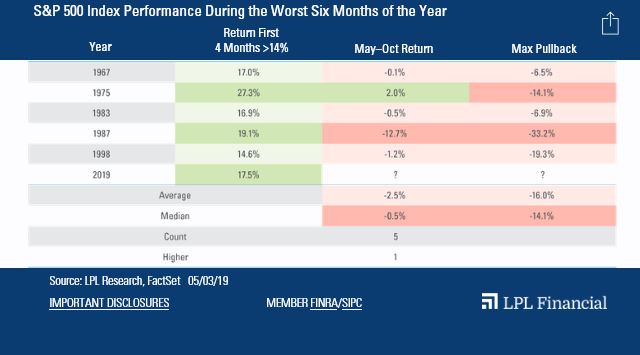
A common goal. we all likely share, is the desire to experience a long and fruitful life. To work towards this goal, you must have a strong foundation in every aspect of your life (e.g. health, emotional, social, financial, etc.).
I cannot assist in developing your workout routines; though I can provide an educational foundation that can be the backbone of your financial independence. This knowledge works to empower you to feel confident in developing your personal financial wealth.
“Wealth is the ability to fully experience life.”
—Henry David Thoreau
For investors’ long-term wealth survival, I believe a top priority should be protecting those investable assets from large, unrecoverable losses. This protection is vital as studies have shown employed people expect to work later in life. Unfortunately, many do not continue to work as planned. The 2018 Retirement Confidence Survey by the Employee Benefit Research Institute (EBRI)/Greenwald found that 48% of retirements occur earlier than planned with most reasons given for early retirement were involuntary (e.g. health problems, disability, changes at the company or could afford to retire early).1This survey also found that 79% of workers expect to work for pay after they retire; though only 34% of retirees have worked since they retired.2Negative returns and high volatility are typically destructive to wealth building. I suggest seeking strategies focused on ways that aim to preserve your hard-earned assets.
According to the 2018 IRI Fact Book’s “A Guide to Information, Trends, and Data in the Retirement Income Industry,” there are over 75% of retirement savings in Individual Retirement Savings accounts compared to under 25% in Private Pension Plans.3 This retirement dynamic of fading income-based plans (e.g. defined benefit plans) and increased reliance on personal accounts (e.g. IRAs) adds substantial risk to one’s income strategy given the investor is responsible for making the investment allocation decisions and producing their own returns.
From my experience, guiding clients transitioning from an investment strategy (aka working years and wanting to grow your assets) toa withdrawal strategy (aka retirement years and wanting an income stream similar to a monthly paycheck), you will feel losses more than you will feel gains. Painful feelings may impair you from making rational decisions during times of market volatility.
Developing and refining your own discipline to manage risk is important. Please be aware that no measure of risk management is perfect every time. Though having a process to manage risk is better than not having one at all.
I have found that by working to reduce the level of volatility within an investment account(s), investors adhere emotionally to the discipline they’ve developed over time. By sticking with your strategy allows the benefits of compounding interest to take effect.
“Compound interest is the 8thWonder of the World.”
—Albert Einstein

Large amounts of data points and market signals are constantly being released from various global sources. Investors will have different interpretations of these data and market signals. I believe investors should consider reallocating to various asset classes that they believe may have a higher probability of going up given their expected future market conditions.
“It’s not what you look at that matters. It’s what you see.”
—Henry David Thoreau
Rather than trying to predict future market movements, focus on risk. For investors, understanding investment risk is a vital concept as it is a function of loss. For example, the more portfolio risk that is taken, the greater the loss may be when markets move negatively. We tackle this phenomenon by applying educated assumptions in an attempt to avoid catastrophic damage over time. This is in the same vein of virtually every professional field; e.g. a surgeon speaking to probabilities, not certainties. These potential outcomes are based on historical data and events, statistics, trends, sentiment, etc., in an effort to control portfolio risk and avoid permanent loss of capital.
The chart below may serve as an example of using historical data aiding an investor’s broader context investment strategy. It is important to avoid relying solely on one data point, chart, statistic, etc. I would suggest using multiple trusted sources as you work to develop your investment strategy.
Big Starts to a Year Can Produce Weak Results Going Forward

(LPL Financial, Tracking #1-850390)
An investor’s thought-process, interpreting and applying information, can be extremely fruitful in managing investment risk. An investor’s risk management strategy plays a large part in determining how to proceed.

Below are a few data points to consider. How do you interpret them and how do you integrate them to your investment risk management process?
- There have been 4 rate-hike cyclesinitiated by the Federal Reserve (Fed) over the last 25 years, includingthe most recent cyclethat has included 9 rate-hikesfrom 12/15/15 to 12/19/18, i.e. the “last rate hike” took place 6 months ago. The 3 previous Fed rate-hike cycle flipped from its “last rate hike” to its “first rate cut” after 5 months(July 1995), 7 ½ months(January 2001) and 15 months(September 2007).4
- Net farm incomein the United States (total gross income in excess of total expenses) is projected to be $69.4 billionin 2019, down 44%from its peak levelof $123.4 in 2013.5
- The USA has reported an unemployment ratelower than the April 2019 jobless rate of 3.6%only 17 times since January 1954, equal to just 2%of the preceding 783 months.6
- Between 1950 and 2018, the U.S. population doubled from 159.1 million to 332.8 million while the number of Americans at least age 65 quadrupledfrom 12.8 million to 52.4 million.7
- . From 1950 to 2018, the life expectancy of a 65-year-old American femalehas increased from 15.1 years to 20.6 years, i.e. an increase of 66 month.8
- A 65-year old American couple has a 48% chancethat at least one of them will live to age 90, i.e. at least a 25-year life expectancy.9
- An estimated 10,400 Americanswill turn 65 years old each day this year(2019). This group represents the 9thyear of 19 yearsof “Baby Boomers” turning age 65. An estimated 11,500 Americanswill turn 65 years old day in the year 2029.10
If you need help, email JAMES.KNAPP@KNAPPADVISORY.COMor learn more at www.KNAPPADVISORY.com.
James C. Knapp, AIF®
Securities and advisory services offered through LPL Financial, a Registered Investment Advisor, Member FINRA/SIPC
The Standard & Poor’s 500 Index is a capitalization-weighted index of 500 stocks designed to measure performance of the broad domestic economy through changes in the aggregate market value of 500 stocks representing all major industries.
“Big Starts to a Year Can Produce Weak Results Going Forward” disclosures:
Date 1950 – 05/03/2019
Performance shown is price returns ex dividends.
Past performance is no guarantee of future results. All indexes are unmanaged and cannot be invested into directly.
The modern design of the S&P 500 stock index was first launched in 1957. Performance back to 1950 incorporates the performance of predecessor index, the S&P 90.
The opinions voiced in this material are for general information only and are not intended to provide specific advice or recommendations for any individual. To determine which investment(s) may be appropriate for you, consult your financial advisor prior to investing. All performance referenced is historical and is no guarantee of future results.
The economic forecasts may not develop as predicted.
Investing involves risk including loss of principal.
All information is believed to be from reliable sources; however, LPL Financial makes no representation as to its completeness or accuracy.
3 “A Guide to Information, Trends, and Data in the Retirement Income Industry,” IRI Fact Book, 2018
4U.S. Federal Reserve
5United States Department of Agriculture
6Unites States Department of Labor
7Social Security 2019 Trustees Report
8,9Social Security Administration
10United States Government Accountability Administration





















































